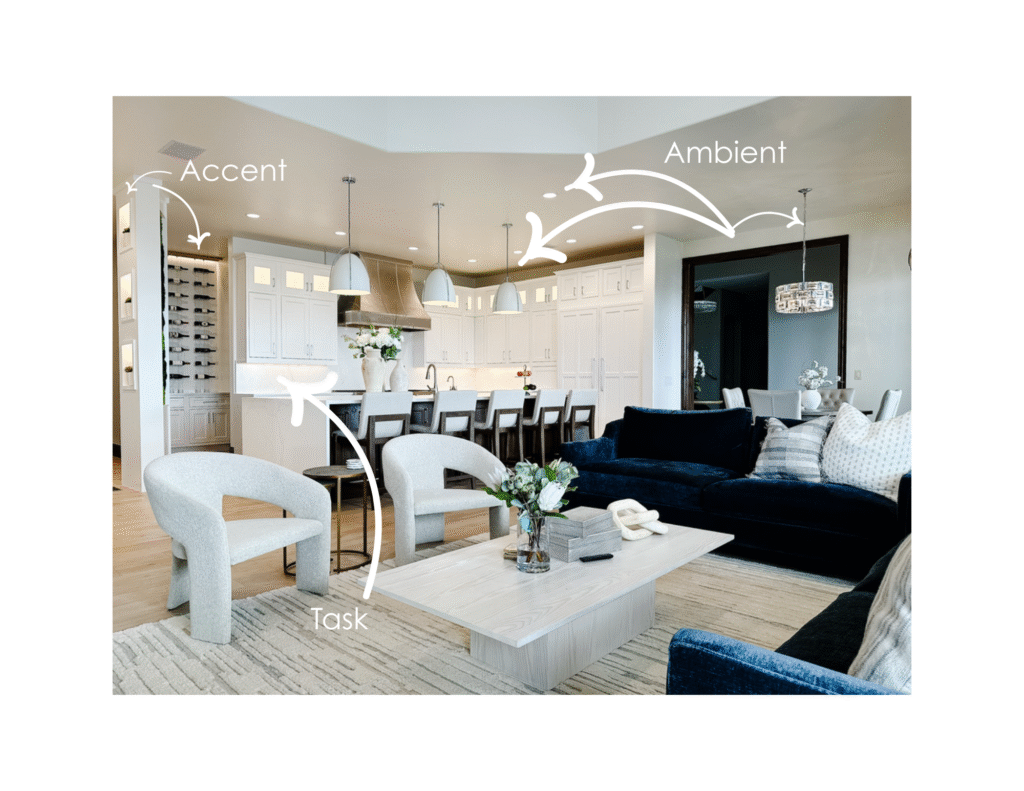Interior designers don’t just “add some lamps” for an extra layer of lighting, they compose lighting. Just like a chef layers flavors, or a fashion designer layers fabrics and accessories. Lighting helps build the scene and is the producer that controls the function, mood, and focal points all at once.
Here’s how we do it (and this applies to most rooms in your home): the 3-layer rule.
Ambient. Task Accent. These three types of lighting work together to build the scene, and mood, in the spaces around your home.
Ambient lighting: the fill light and most often, star of the show (think a dining room chandelier)
Task lighting: more targeted and functional (think a reading lamp)
Accent lighting: highlights areas around the home (think a gallery lamp for art)
Designers use equal amounts of each type of lighting to balance a room, and when necessary, adjusts the lighting needs based on the function and desired mood of the room.

When working with lighting, it is also important to adjust the layering with different heights. This helps balance the focal points, too. You want to have lighting at ceiling level, eye level, and low level. We never want a room to look flat, so this approach creates depth and shadow play, which makes a room feel more dynamic.
Designers also love to treat lighting as part of the decor – which some of you may think, “well duh” – but you’d be surprised how elevated your room will feel when you put a little extra thought and intention into your lighting. Fixtures aren’t just functional, they’re focal points. We love to choose pieces that complement the room’s style, add texture or contrast, and create a visual rhythm through repetition or symmetry.
With the right selection of ambient, task, and accent lighting, you can elevate the design of your space and set the mood for any hour of the day.
